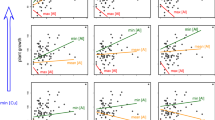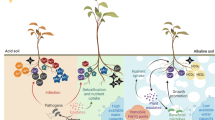Abstract.
Metal hyperaccumulating plants contain very high metal contents. Because of the general toxicity of metals, chemically-mediated biotic interactions involving hyperaccumulating plants may differ greatly from those of non-hyperaccumulators. Recent research has demonstrated a defensive function for hyperaccumulated metals against herbivores and pathogens. We predict that some herbivore/pathogen species have evolved metal tolerance, and suggest that resulting high metal levels in herbivores/pathogens may defend them against their own predators. Little is known regarding interference and commensal interactions involving hyperaccumulating plants. Decreased competition may occur through an interference interaction similar to allelopathy, in which enrichment of metal in the soil under a hyperaccumulator plant's canopy may inhibit another plant species, thus resulting in “elemental allelopathy”. Metal enrichment of soil under hyperaccumulators also may result in commensalism if another plant species (possibly another hyperaccumulator) derives a benefit from growing in the metal-enriched soil under the canopy of a hyperaccumulating overstory plant. It seems likely that high-metal plant litter will host a specialized microflora of decomposers and may affect nutrient cycling rates. Mutualist biotic interactions also may be affected by the elevated metal contents of hyperaccumulating species. Mycorrhizal fungi may form mutualisms with hyperaccumulators, but the phenomenon is poorly-explored. The few cases investigated to date have not detected mycorrhizae. Pollination and seed dispersal mechanisms may require biotic vectors that might be affected by plant metal content. Hyperaccumulating plants may have solved this dilemma in three ways. First, some may rely on abiotic vectors for pollen or seed dispersal. Second, biotic vectors used by these species may have varied diets and thus dilute metal intake to non-toxic levels. Finally, biotic vectors may have evolved tolerance of elevated dietary levels of metals, and perhaps have become specialists on hyperaccumulator species.
Similar content being viewed by others
Author information
Authors and Affiliations
Additional information
Received 7 November 1997; accepted 28 December 1997.
Rights and permissions
About this article
Cite this article
Boyd, R., Martens, S. The significance of metal hyperaccumulation for biotic interactions . Chemoecology 8, 1–7 (1998). https://doi.org/10.1007/s000490050002
Issue Date:
DOI: https://doi.org/10.1007/s000490050002




